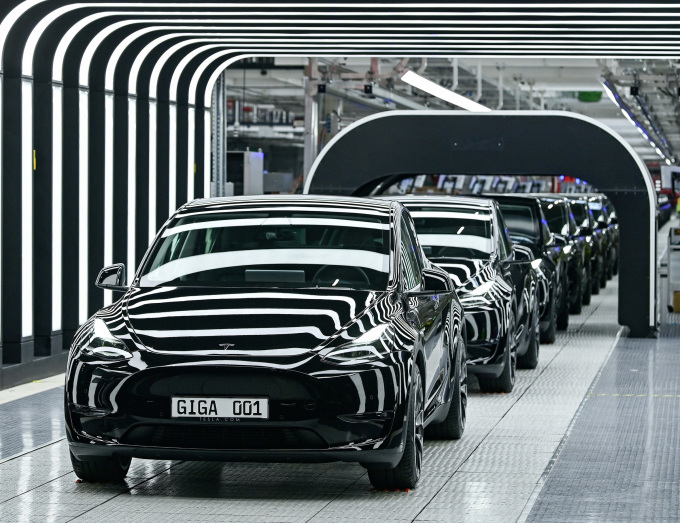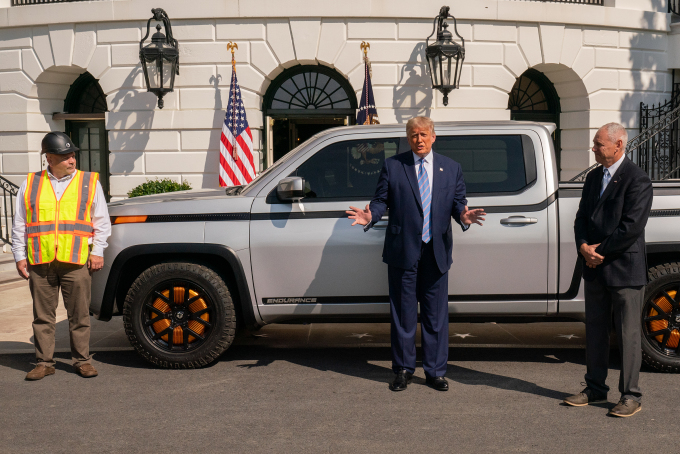Last year, Tesla earned 1.5 times more from selling carbon credits as traditional automakers rushed to reduce emissions to comply with the EU’s strict regulations taking effect this year.
According to Tesla’s 2024 financial report, revenue from carbon credit sales reached $2.76 billion, up 54% from 2023. This increase signals continued demand for these credits as gasoline car manufacturers struggle to meet increasingly stringent emissions rules.
A carbon credit is a tradable permit that grants its holder the right to emit one ton of CO2 or another greenhouse gas on the regulated emissions list.
Under the European Union’s vehicle emissions reduction plan, from 2025, carbon emissions from cars must drop nearly 24% from the 2019-2023 levels to 93.6g CO2 per km. According to Carbon Credits, nine of the world’s ten largest automakers (excluding Tesla) fail to meet this standard. BMW, Kia, and Stellantis need to cut emissions by 9–11%, while Volkswagen and Ford are the farthest from compliance, exceeding the limit by 21%.

Luca De Meo, CEO of Renault, estimates that this regulation could cost European automakers €15 billion ($15.6 billion).
Buying carbon credits is a solution for those unable to meet emissions standards. This benefits sellers—mainly EV manufacturers Tesla and Polestar—by providing both economic gains and environmental advantages.
While gasoline and hybrid car manufacturers must purchase credits, Tesla generates them by selling zero-emission vehicles, at no additional production cost, maximizing profit margins. Since 2017, Tesla’s total revenue from carbon credit transactions has surged past $10.4 billion.
Automakers such as Stellantis, Toyota, Ford, Mazda, and Subaru buy credits from Tesla, while Mercedes partners with Polestar, Volvo Cars, and Smart. These alliances highlight the growing dependence on carbon credit trading to bridge the gap between actual emissions and regulatory limits, underscoring the broader challenges in transitioning to sustainable transportation.
Previously, analysts predicted Tesla’s carbon credit revenue would decline as more automakers ramped up EV production. However, Tesla’s earnings from credit sales have continued to soar, setting new records from 2022 onward.
One key reason is the slow transition of traditional automakers to electric vehicles. While companies like Ford and General Motors have made strides in EV production, many still rely on Tesla’s credits to comply with emissions standards in the U.S., Europe, and China.
Beyond purchasing credits, automakers are also ramping up EV investments. Stellantis is investing €30 billion in electrification and software, while Mercedes aims for carbon neutrality across all new models as part of its “Ambition 2039” plan. The company has operated carbon-neutral production facilities since 2022, using renewable energy and sustainable practices, with a goal for 50% of its sales to come from EVs by 2030.
Analysts predict that as more automakers invest in EVs, carbon credit trading agreements may decrease, potentially reducing Tesla’s revenue from this segment. However, with tightening global regulations—including the EU’s plan to ban new gasoline and diesel car sales by 2035—demand for carbon credits is expected to keep rising.
Challenges Tesla in 2025: U.S. Ends Biden-Era EV Policies
Donald Trump revokes an executive order aimed at making half of all car sales electric and considers revising emissions regulations.
On January 20, immediately after taking office as U.S. President, Donald Trump announced the termination of an executive order on electric vehicles signed by his predecessor, Joe Biden, in 2021. This order sought to ensure that half of all cars sold in the U.S. by 2030 would be electric—a goal supported by both domestic and international automakers.

Trump is also planning to direct government agencies to reconsider emissions control regulations. Under the current rules, automakers would need 30-56% of their sales to come from EVs by 2032 to remain compliant.
“With my actions today, we will end the Green New Deal and abolish the ‘EV mandate,’ saving the auto industry and keeping my sacred promise to the great American auto workers,” President Trump declared in his inauguration speech.
He claimed that these changes would enable the U.S. to manufacture cars at a speed that “no one could have dreamed of just a few years ago.”
These moves were widely anticipated. Throughout his campaign, Trump repeatedly criticized EVs, arguing that banning gasoline-powered cars was a mistake.
He dismissed the environmental benefits of electric vehicles, asserting that they pave the way for China’s manufacturing dominance, push U.S. automakers toward bankruptcy, and cause mass job losses for blue-collar workers. After his re-election, he vowed to repeal vehicle regulations imposed by the Environmental Protection Agency (EPA) and the Department of Transportation upon taking office.
Last month, sources told Reuters that Trump is also considering reducing or eliminating EV tax incentives. Under Biden’s policy, consumers receive a $7,500 tax credit for new EV purchases and $4,000 for used ones (for first-time conversions), effective from early 2024.
Trump reportedly plans to redirect funds from EV incentives and charging infrastructure to support mineral processing for battery production, the defense supply chain, and critical infrastructure. According to his transition team, batteries, minerals, and essential components are vital to national defense manufacturing, whereas EVs and charging stations are not.
Beyond removing EV subsidies, Trump’s team has proposed reinstating 2019 emissions regulations, which would allow vehicles to emit about 25% more CO2 per mile and have 15% lower fuel efficiency compared to the limits set by Biden’s administration for 2025.
Cutting EV support could impact Tesla’s sales. However, Tesla CEO Elon Musk—who contributed over $250 million to Trump’s campaign—argued that losing subsidies would hurt Tesla’s competitors more than his own company.




